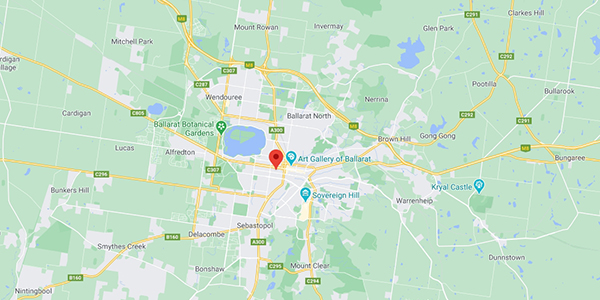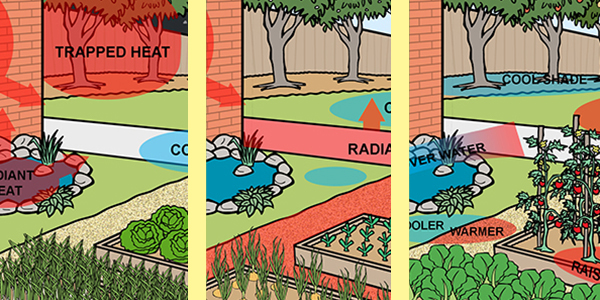Even if you do not live in the Ballarat area this section is worth looking at to see how similar the climate of Ballarat is to where you live. That way you will be able to adjust the information on this site to better fit your hometown’s climate.
Ballarat is a regional city in the central highlands area of the State of Victoria, Australia.
Map of Ballarat
The Ballarat region has dry hot summers and cool wet winters. The average maximum summer temperature is 25.3 °C, though there are usually a few days each summer where the temperature exceeds 35 °C. The average minimum summer temperature is 11.5 °C.
The average maximum Winter temperature is 10.1 °C. and the average minimum winter temperature is 3.2 °C, though on clear still nights the temperature can drop to as little as minus 4 °C, which can result in heavy frosts. It does occasionally snow in winter, but it rarely stays on the ground for more than a few hours. A more typical winter weather pattern is for periods of overcast and wet weather, which can cause the soil to become sodden.
The average annual rainfall is 686.5 ml. The month with the lowest rainfall is January (40.1 ml) and the month with the highest is August (73.7 ml). *
* WEATHER DATA SOURCE: Australian Bureau of Meteorology
BALLARAT CLIMATE SUMMARY
- Hot and dry in Summer, cold and wet in winter
- SUMMER AVERAGE TEMPERATURE: Max 25.3. °C Min 11.5 °C
- WINTER AVERAGE TEMPERATURE: Max 10.1 °C Min 3.2 °C
-
AVERAGE ANNUAL RAINFALL: 686.5
mm
While winters can be pretty wet in summer vegetable patches usually have to be watered fairly regularly to compensate for the hot dry conditions and deep watering of fruit trees will improve fruit yields.
Vegetables that can be grown
All standard vegetables can be grown in Ballarat, with the exception of tropical vegetables like snake beans. Though heat loving vegetables (such as capsicum and eggplant) do better when grown in a greenhouse. Frost sensitive vegetables, (such corn , pumpkin and tomato) can’t be planted outside until after the last frost, usually around the end of October (mid-spring, Southern hemisphere)
Fruit that can be grown
Most varieties of citrus can be grown, though all citrus require protection from frosts when young and some varieties produce poor quality fruit as they are better suited to a warmer climate.
Most varieties of pome fruit (includes apple, pear and quince) and stone fruit (includes apricot, cherry, nectarine, peach and plum) can be grown. However the climate is a bit marginal for apricot, peach and nectarine.
Avocados, banana, paw paw and mango trees are not suited to the Ballarat area.



